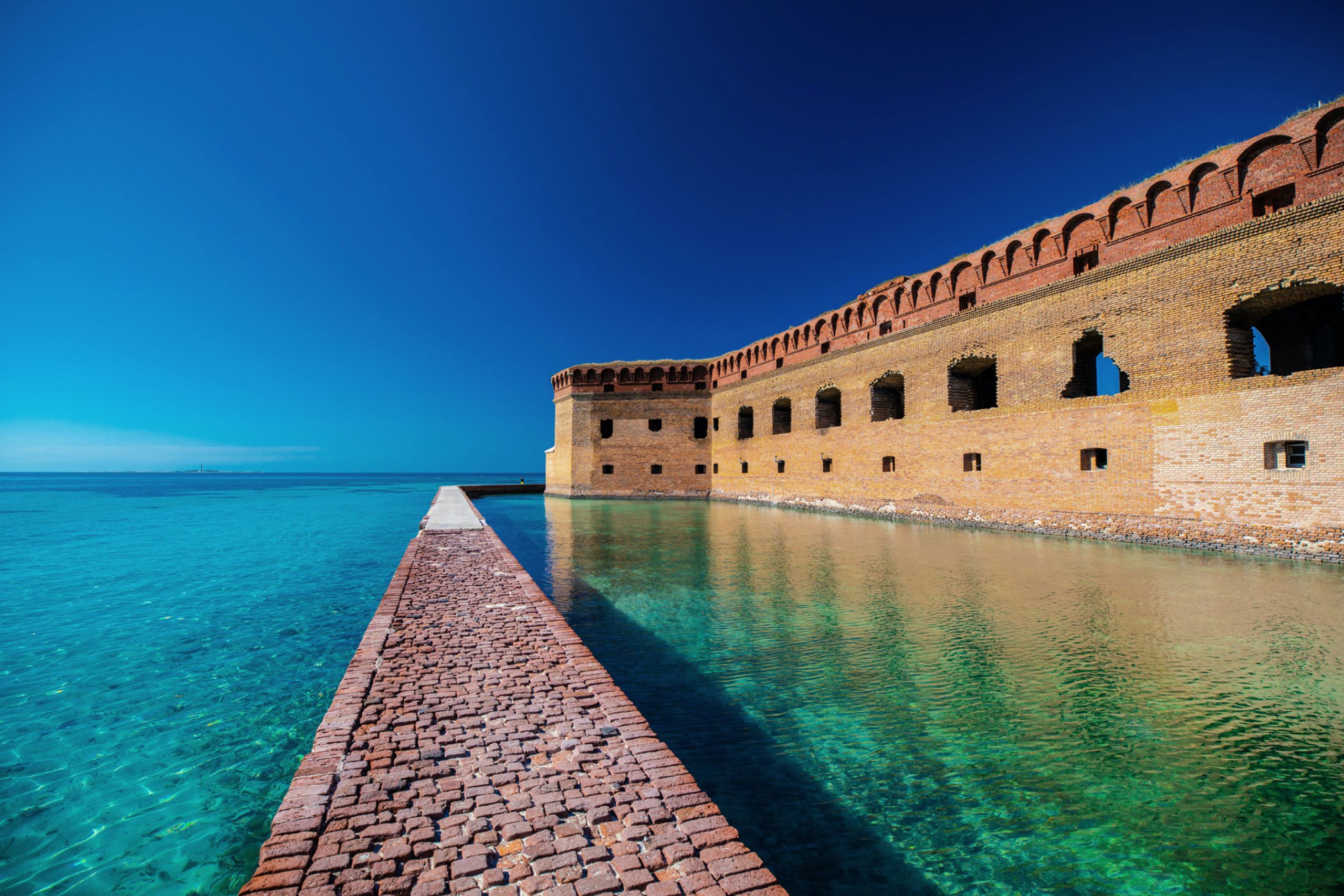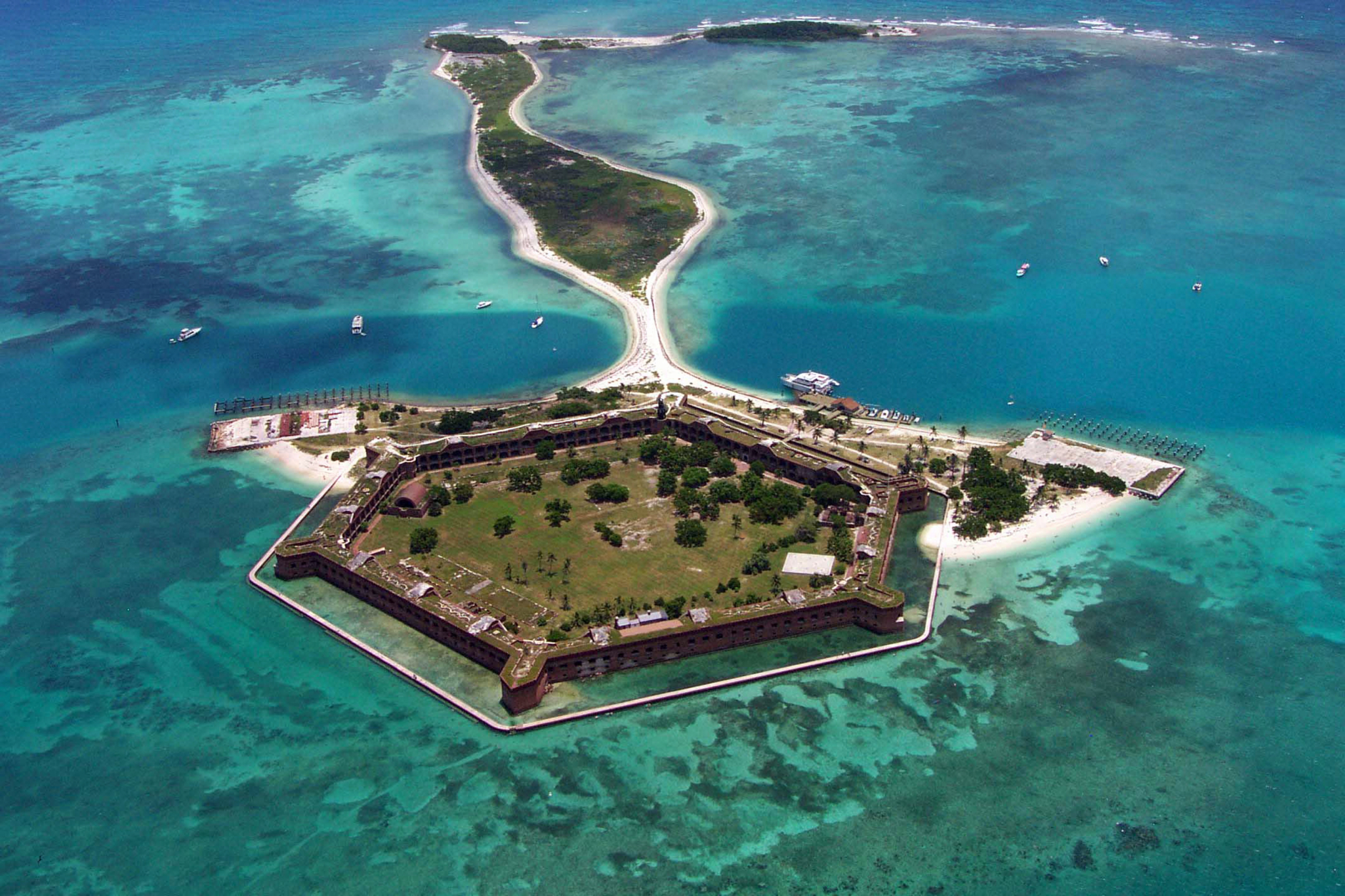
Dry Tortugas National Park
A cluster of islands in the Florida Keys where
history and nature go hand-in-hand
A cluster of islands in the Florida Keys where
history and nature go hand-in-hand
Although 70 miles from Florida’s famed Key West, a desolate destination Dry Tortugas National Park is not!
This collection of seven keys is a prized paradise amongst locals and adventurous tourists alike. Housed within the islands is Fort Jefferson, the largest all-masonry fort in the United States, which began construction in 1846 to protect the nation’s gateway to the Gulf of Mexico. Several other safeguarding structures soon followed, including a lighthouse at Garden Key and a lighthouse on Loggerhead Key.
Those constructions may still be standing, but the islands of Dry Tortugas are in a constant state of change, subject to the influences of marine, atmospheric and terrestrial environmental processes. Geology, tides, currents, water, air quality, weather, climate, noise, light pollution and the actions of humans are just a few of the many natural and human factors that have shaped the development of land and waterscapes in Dry Tortugas.
One of the most drawing attractions of Dry Tortugas National Park is its namesake turtles (tortugas is Spanish for turtles). Five species of sea turtle are found in the waters of South Florida: loggerhead, green turtle, leatherback, Kemp’s ridley and hawksbill. All five species are now listed as either threatened or endangered under the Endangered Species Act of 1973. But probably the most abundant opportunity to observe wildlife comes from the nearly 300 species of birds around the park, the majority of which are migratory.
For those that fancy flora over fauna, of the 125 plant species reported in Dry Tortugas National Park, 81 species (65% of the total) are of exotic origin, the result of accidental and deliberate introduction by humans during the past century. Below the surface, the park’s seagrass and coral communities are among the most vibrant in the Florida Keys.
For almost two centuries, Dry Tortugas has provided protection for the human inhabitants of our country and their interests. Now it’s time for us to return the favor.
Youth Environmental Programs
Youth education programs within Dry Tortugas National Park focus on marine stewardship, conservation education and history by utilizing natural and cultural resources-based curriculum.
Rangers conduct pre-trip classroom lessons providing an overview of the National Park Service, with an educational field trip that follows, which provides experiential hands-on learning opportunities for the participating students.
In the 2023 – 2024 season, Dry Tortugas provided programming for seven local middle schools, totaling 215 students and teachers, with the support of The Alliance. The program has plans to only get bigger from there!
Sea Turtles
Did you know that the beaches at Dry Tortugas have the highest nesting density of turtles in Florida and account for 94% of all nesting activity in Monroe County? The 2023 sea turtle nesting season at Dry Tortugas was record-breaking, with 2,042 sea turtle nesting activities, including 1,410 false crawls and 632 nests. Sea turtle nesting is extremely intense, with at least 10-20 turtles attempting to nest per day per key during peak season. Due to this density, beaches need daily observation to distinguish between false crawls and true nesting activity. The park estimates missing anywhere from 100 to 400 nests per year due to insufficient observations.
Debris Clean-Up
Like Biscayne National Park, the coral reefs and beaches at Dry Tortugas National Park are littered with derelict lobster and crab traps, rope, and other debris. This debris harms seabirds, sea turtles, and reef resources by crushing, breaking, and smothering reef structures and organisms, obstructing nesting habitat, and interfering with foraging. These injuries are exacerbated during storms and hurricanes when debris is moved around.
The objective of this clean-up project is to remove abandoned traps, trap fragments, and marine debris from Dry Tortugas’ reefs and beaches before the annual arrival of sooty and noddy terns, the start of sea turtle nesting season, and the fall King Tides, which pull shoreline debris back into the ocean from high up on the park’s beaches. This effort is crucial in protecting the delicate ecosystems and ensuring a safe habitat for nesting sea turtles and other marine life.
Your support helps The Alliance fund these vital clean-up efforts, ensuring the preservation of these critical habitats. By donating, you contribute to a healthier and safer environment for the diverse species that call Dry Tortugas home.
"An overlooked gem in the Florida Keys."
— USA Today




